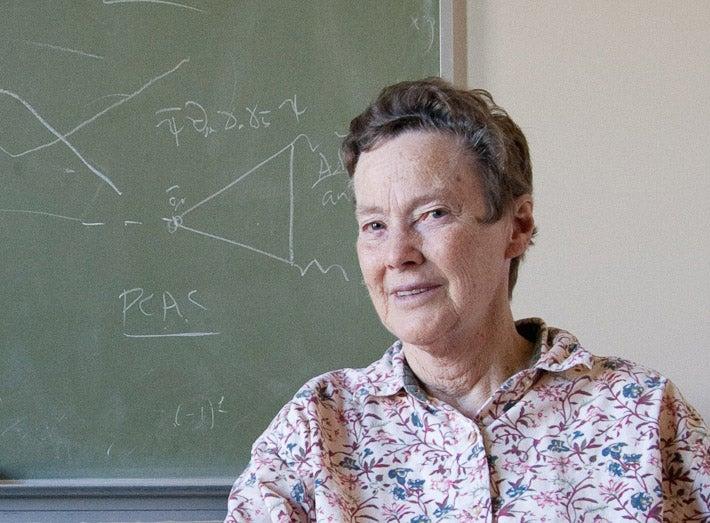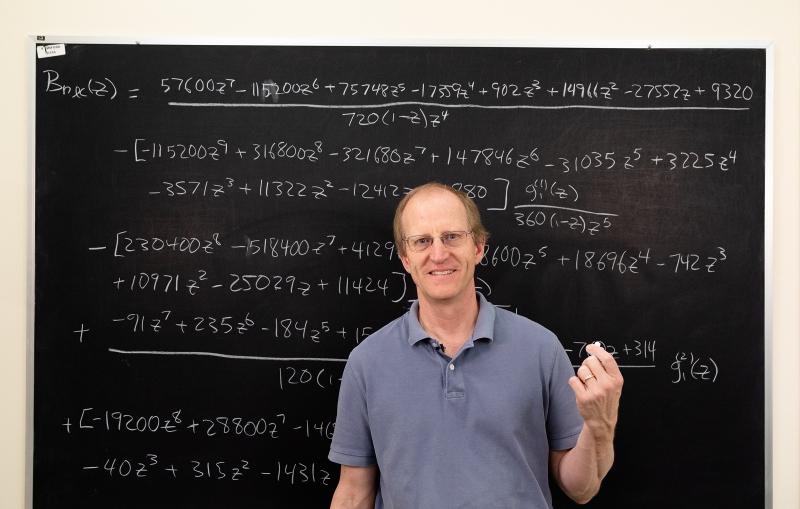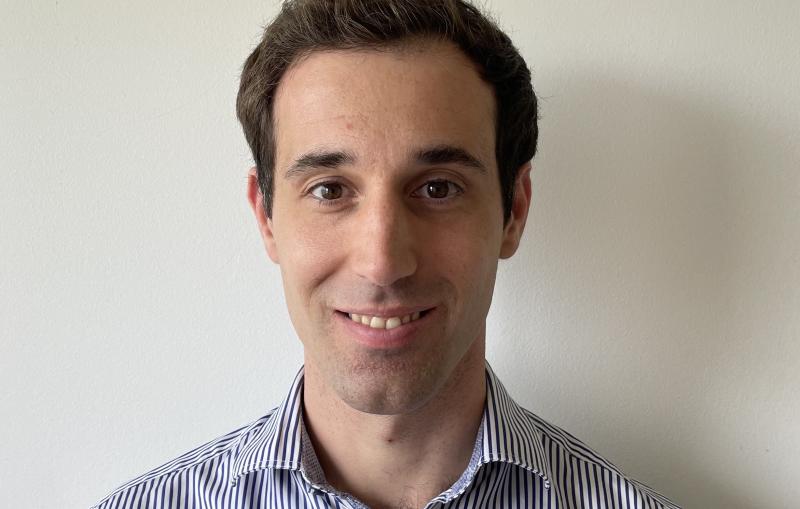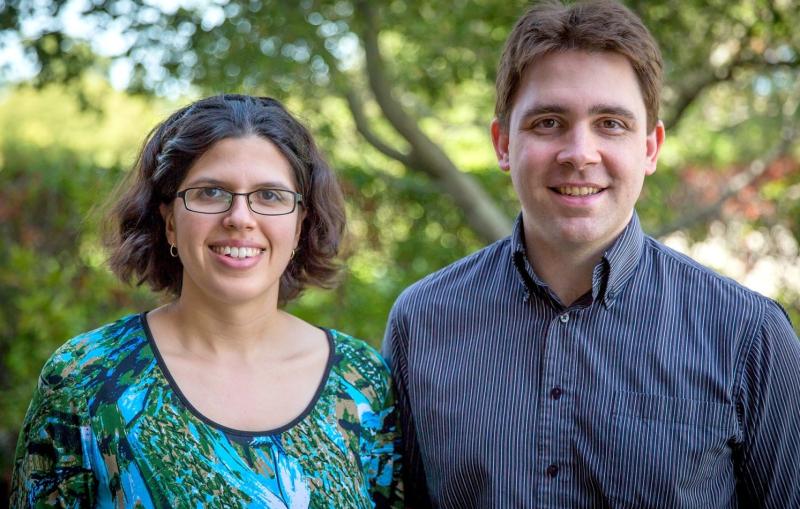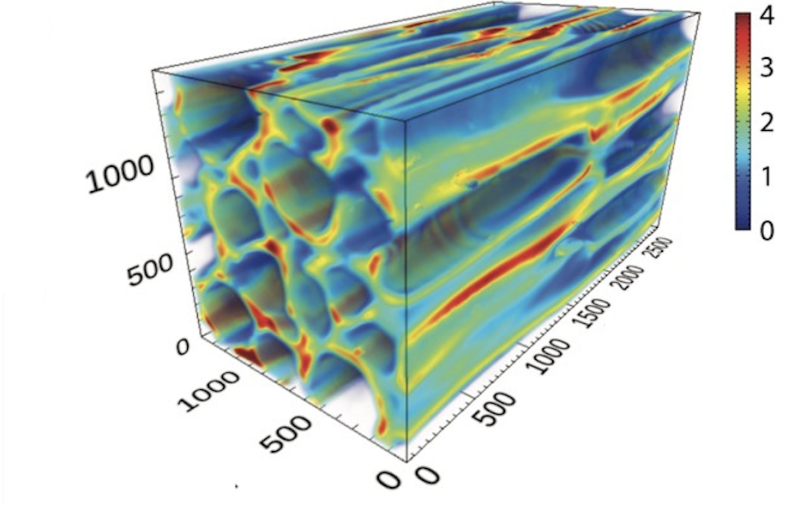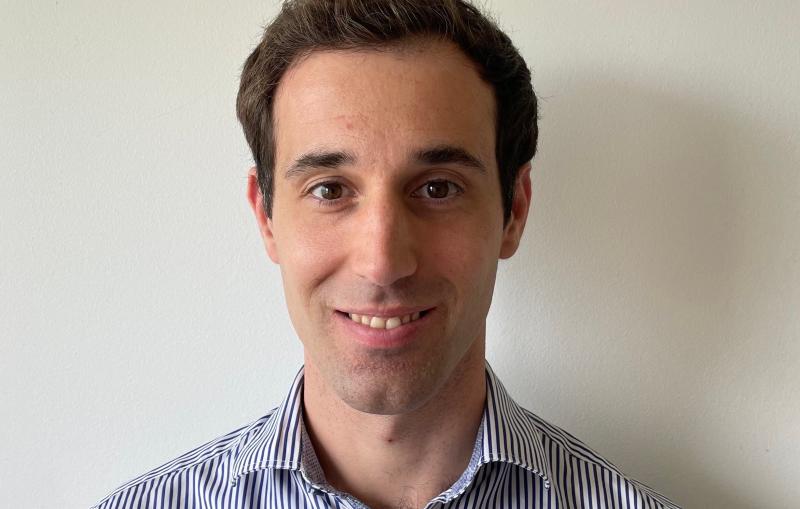SLAC’s Helen Quinn to Receive 2016 Compton Medal
Emerita Professor Honored for Contributions to Theoretical Physics and Science Education
Helen Quinn, a professor emerita at the Department of Energy's SLAC National Accelerator Laboratory and Stanford University, will receive the 2016 Karl Taylor Compton Medal for Leadership in Physics for her contributions to science education and theoretical physics.
The medal, given every four years by the American Institute of Physics, recognizes distinguished physicists for outstanding statesmanship in science and comes with a $10,000 cash award.
In announcing the award today, the institute cited “her leadership in promoting K-12 education and outreach, including the development of standards and approaches to science education that have had an enormous influence at the local, state, national and international level, and for her broad and deep contributions to the advancement of theoretical particle physics.”
Quinn, who was notified of the award last week, said, “It’s a big honor. I was delighted when they called. It’s very nice to get this level of recognition from my community.”
Said SLAC Director Chi-Chang Kao, “Helen’s combination of distinguished scholarship and statesmanship are very deserving of the Compton Medal, and I join the whole lab in congratulating her on this important honor.”
Born in Australia, Quinn came to the United States with her parents as a college student. She earned bachelor’s, master’s and doctoral degrees in physics at Stanford and joined SLAC in 1979 after doing research at Germany’s Deutsches Elektronen-Synchrotron (DESY) and Harvard University.
For her path-breaking research in theoretical physics, including work on “grand unified theories” and a famous conundrum known as the “strong CP” problem, Quinn shared two of the most important prizes in her field – the 2000 Dirac Medal and the 2013 J.J. Sakurai Prize for Theoretical Particle Physics – and was awarded the 2008 Oskar Klein Memorial Lecture and Medal by Stockholm University and the Royal Swedish Academy of Sciences, in addition to numerous other honors. Among other notable accomplishments, the theory she developed in the 1970s with Roberto Peccei of the University of California, Los Angeles, to solve the strong CP problem led to the invention of a particle called the axion that could account for some or all of the dark matter that makes up 23 percent of the mass of the universe. Scientists are still trying to determine experimentally whether the axion exists.
But the Compton Medal is not given for scientific achievement alone, said Robert J. Birgeneau, a professor of physics at the University of California, Berkeley, who chaired the selection committee. As the flagship award given by the AIP, it honors scientists who have also had a significant impact on society.
“We had an impressive list of candidates, and among those nominees Helen stood out because of her combination of outstanding research in particle physics and her singular contributions to K-12 education, which had their roots in improving science education in the Oakland school district in the 1980s and blossomed into leadership at the state and national levels,” Birgeneau said. “As a former winner of this award myself, I’m humbled to be in the same company as Helen Quinn.”
Quinn’s work in science education began in 1988, when as a SLAC staff scientist she began leading educational outreach programs at the lab. In addition to the Oakland schools project, they included an undergraduate summer research program with an emphasis on bringing students from underrepresented groups to the lab; summer workshops for high school science teachers; and development of the SLAC visitor center and online virtual visitor center.
She also co-founded the Contemporary Physics Education Project, which developed and distributed large posters and other materials about major areas of physics that are still used in classrooms today, and played a volunteer role in helping to develop the California State Science Standards that were adopted in 1997.
In 2005 Quinn joined the Board on Science Education of the National Research Council – the working arm of the National Academies of Science, Engineering and Medicine. She chaired an NRC committee that produced “A Framework for K-12 Science Education,” a widely influential report that served as the basis for the Next Generation Science Standards (NGSS) issued in 2013. The standards have now been adopted by 14 or 15 states and the District of Columbia, Quinn said, and have influenced science education standards in other states and nations. The goal, she said, is “to try to shift pedagogy from a very didactic system, where students take notes and memorize, to a more active system where students are doing things and thinking for themselves.”
Quinn continues to work for the adoption and implementation of the NGSS. She also collaborates on Stanford projects aimed at helping students who are learning English succeed in math and science and advising the state of California on how to assess student performance under the new standards.
Quinn also co-chaired the California Framework and Curriculum Committee for Science, which advises the California Department of Education and is preparing a document to guide implementation of the NGSS in the state. In that role, she contributed substantially to writing the new California Framework for Science; the latest draft is scheduled to go out for review this week.
In her most recent education endeavor, in March Quinn joined the board of the National University of Education, one of four new leadership universities set up by the government of Ecuador, which focuses on training elementary school teachers.
Retired from the lab since 2010, Quinn said she does all of her science education work on a volunteer basis. She gives a lot of talks to science teachers, from the local school district level to the National Science Teachers Association, and testifies before state boards of education.
Trying to shift the way science is taught will take time, she said: “I see it as a 10-year process. If we’re lucky, and people persist, in 10 years we will have made a difference.”
Related links:
Helen Quinn talks about her work in physics in a podcast recorded in 2004 by the National Academy of Science.
“Of symmetries, the strong force and Helen Quinn,” symmetry magazine, Jan. 27, 2015.
“New report lays out what kids should know about science,” SLAC Today, July 28, 2011
Contact
For questions or comments, contact the SLAC Office of Communications at communications@slac.stanford.edu.
SLAC is a multi-program laboratory exploring frontier questions in photon science, astrophysics, particle physics and accelerator research. Located in Menlo Park, Calif., SLAC is operated by Stanford University for the U.S. Department of Energy's Office of Science.
SLAC National Accelerator Laboratory is supported by the Office of Science of the U.S. Department of Energy. The Office of Science is the single largest supporter of basic research in the physical sciences in the United States, and is working to address some of the most pressing challenges of our time. For more information, please visit science.energy.gov.
